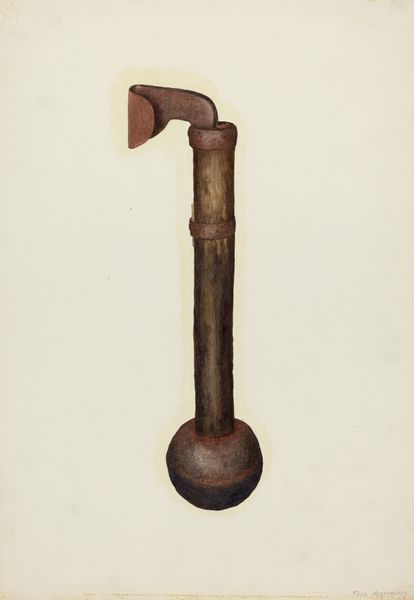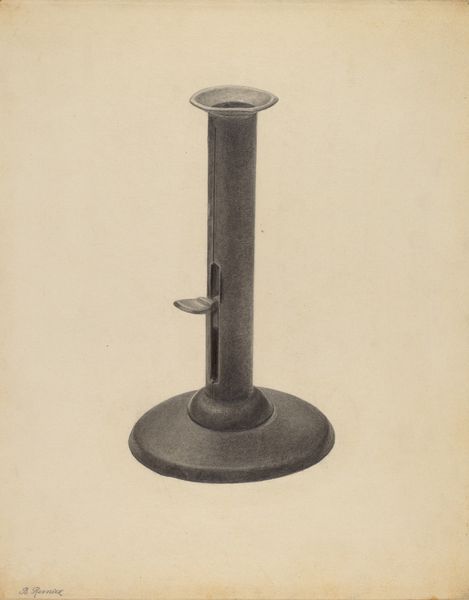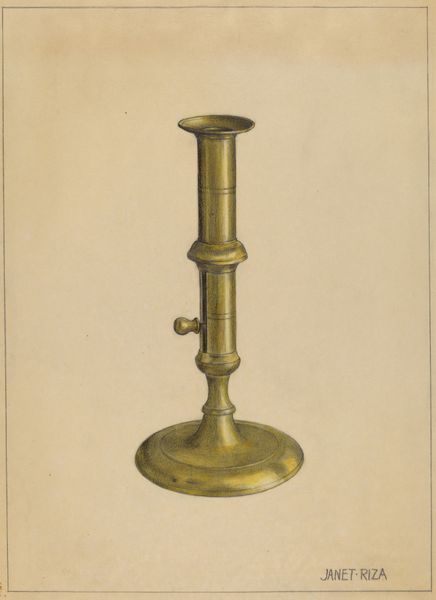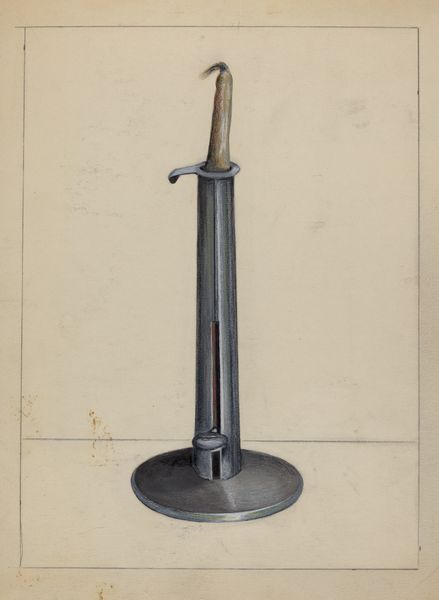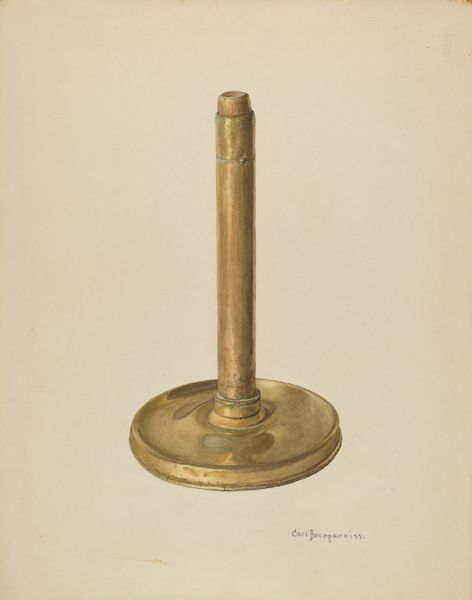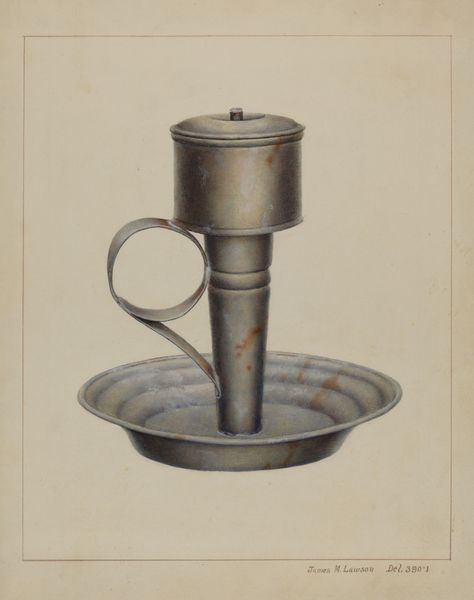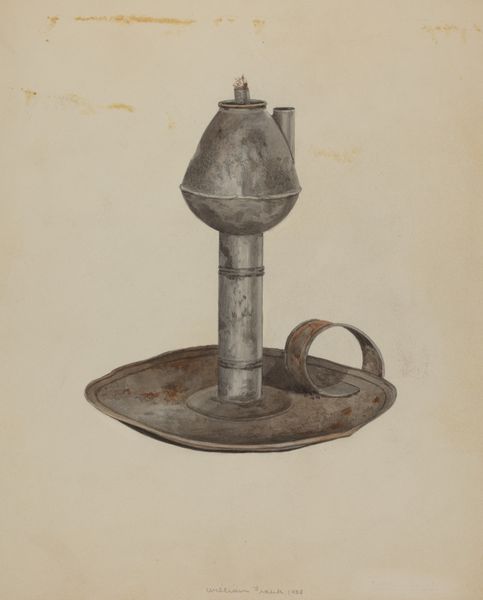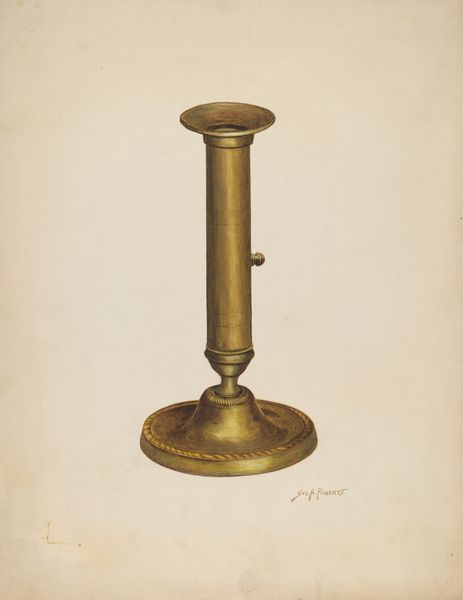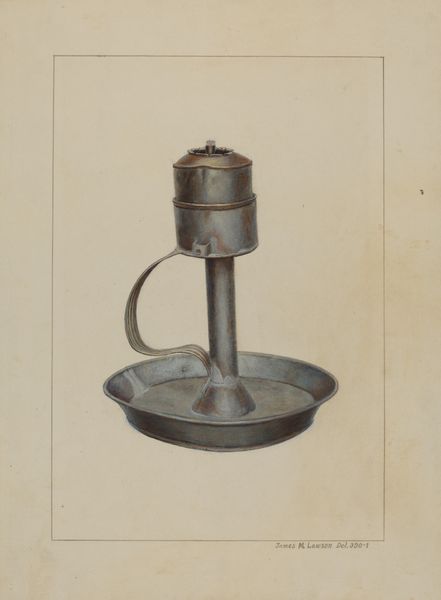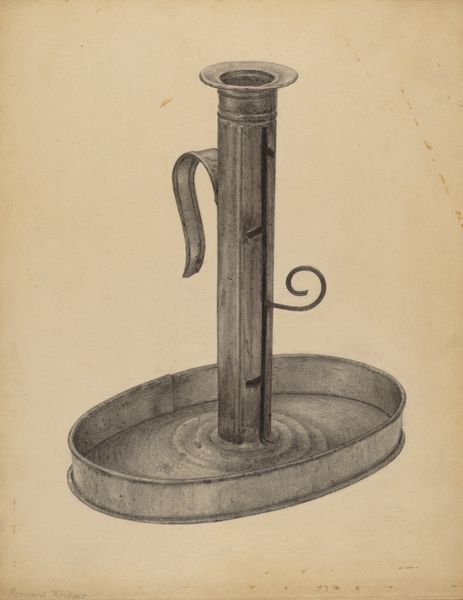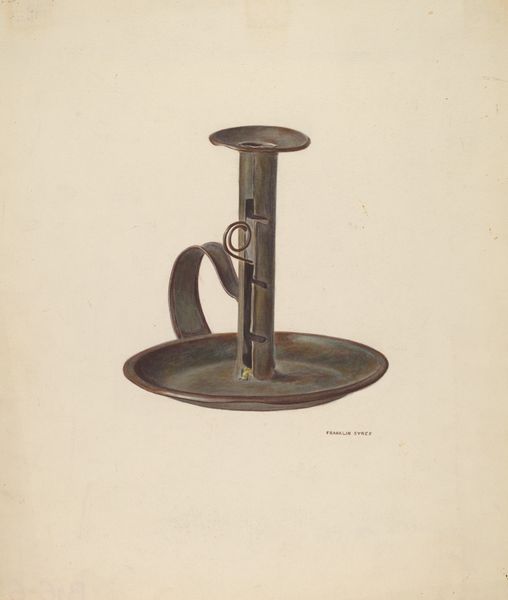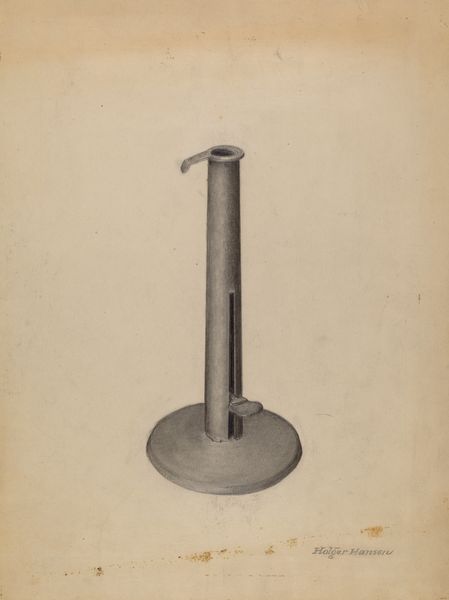
drawing, watercolor
#
drawing
#
water colours
#
charcoal drawing
#
watercolor
#
watercolour illustration
#
modernism
Dimensions: overall: 31 x 22.7 cm (12 3/16 x 8 15/16 in.) Original IAD Object: 7" high; stem: 5/8" in diameter; base: 4" in diameter; top: 1 1/2" in diameter
Copyright: National Gallery of Art: CC0 1.0
Curator: Samuel Fineman’s "Candlestick," likely created around 1938, offers a striking image. I’m curious, what is your immediate reaction? Editor: Stark, yet utilitarian. It feels so solid, almost industrial, depicted in watercolors. There's a quiet beauty to the presentation of an object of daily life, really foregrounding material culture. Curator: Indeed. Fineman doesn’t merely represent the candlestick. I would say it elevates its form, prompting questions around class and domestic labor at that historical juncture, as light was shifting from candlelight to electric. How did that technological transformation impact everyday rituals, for example? Editor: The application of watercolor intrigues me here. Usually we think of this medium as diaphanous. However, he manages to create weight. What materials were these candlesticks usually constructed from during this period? Is he accurately reflecting this object's reality or re-imagining its potential manufacture? Curator: I think your emphasis on process opens up interpretations about the negotiation between modern aesthetics and pre-industrial lifestyles. While many modernist movements were focused on celebrating the future, artists still worked within a continuum. Perhaps, even paying tribute to how things were made in the past, while reimagining a future? Editor: The subtle details are quite important here, I think, given how muted the coloration is: the careful highlighting and shading that mimics wear, or the functional lever on the side. I wonder if these suggest a longing for utility, permanence, maybe in contrast to the economic instability that defined the period? Curator: That sense of “permanence” resonates with how identity gets shaped through domestic spaces. To expand on that, gender roles became hyper-defined in interwar periods, and something like this connects with expectations about safety and routine, but also the anxieties tied to class performance and upkeep during that time. Editor: Ultimately, Fineman encourages us to meditate on the profound in what’s simple. Considering both technique and form, this seemingly modest drawing speaks volumes. Curator: A wonderful perspective. Seeing it in this light allows one to reflect on both history and our lived reality.
Comments
No comments
Be the first to comment and join the conversation on the ultimate creative platform.
